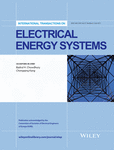A proposal of a qualitative index for mechanical withstand safety margin analysis of transformers
Summary
In this article, a qualitative index based on an analytical methodology for calculating a global mechanical withstand safety margin for a power transformer is developed. The safety margin is calculated using parameters describing the transformer's mechanical characteristics, as well as the electrical conditions in the power system to which it is connected. The proposed methodology would allow utility professionals to evaluate the mechanical withstand adequacy of transformers produced by different manufacturers at the time of transformer acquisition, and to monitor any changes in the mechanical withstand capability of transformers already in operation as a result of the evolution of the power system itself. Moreover, the safety margin can serve as a useful metric in defining the distributed generation (DG) hosting capacity of the grid. The practical application of the proposed analysis method is illustrated by analyzing 3 power transformers with different mechanical characteristics, and with ratings of 15 kVA, 5 MVA, and 100 MVA.




